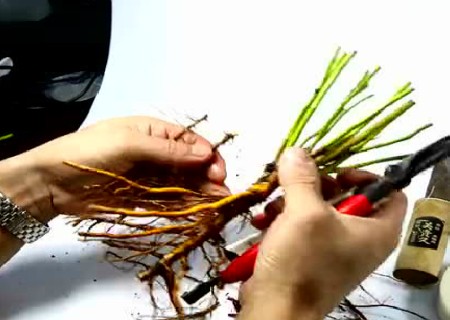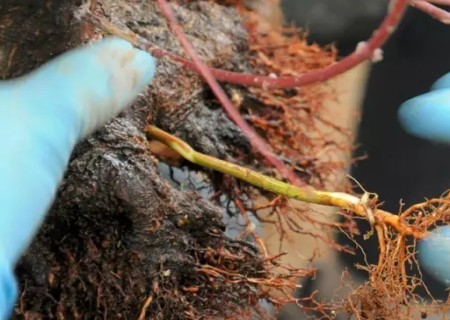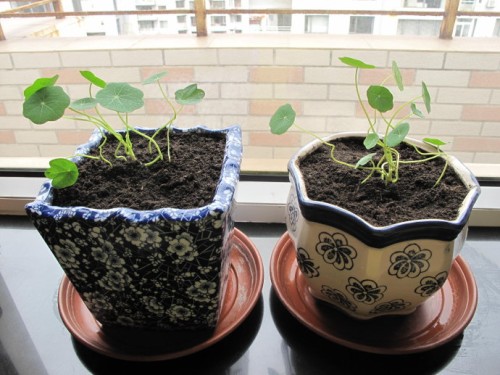Root grafting technique of Rose-- Root grafting method of bare Root seedlings
Speaking of root grafting, we need to talk about grafting first. Why? Because root grafting belongs to the two ways of grafting: "branch grafting" and "bud grafting". Grafting is one of the methods of artificial vegetative propagation of plants. That is, the branches or buds of one plant are grafted onto the stem or root of another plant, so that the two parts that are connected together grow into a complete plant. Root grafting uses the root system as the rootstock and grafts the scion on it. The root used as a rootstock can be a complete root system or a root segment.
Root grafting is a kind of seedling raising method which uses the root as the rootstock to graft the cultivated variety on the root. The period of root grafting is the same as that of branch grafting, mainly in the dormant period of seedlings.
After the seedlings come out of the nursery in autumn, the annual roots with a diameter of more than 1 cm are selected and cut into root segments of 10 cm-15 cm, with several fibrous roots on each section of the rootstock. If there is no fibrous root, the length should be lengthened and scratched on the root to promote the lateral root. After cutting, it is buried in the ground kiln with wet sand. During storage, we should pay attention to maintain the humidity of the sand, prevent it from being too dry or too wet, and pay attention to the temperature in the kiln to prevent the root rootstock from getting hot or frozen.

The scion selects one-year-old developing branches with a diameter of about 0.8 cm, which are robust, disease-free and pest-free, which can be selected from the branches pruned in winter. Branches that have sprouted should not be used as scions.
When grafting, first cut the scion into a wedge-shaped cutting surface according to the requirements of splitting or cutting, and insert it into the incision at the thicker end of the rootroot, and the cambium of the rootroot and the scion should be aligned and closely grafted. If the thickness of the rootstock is different from that of the scion, and the root segment is thinner than the scion, cut the root segment into a wedge-shaped cutting surface, connect it to the ear, and pay attention to the alignment and close connection of one side of the cambium, which is the key to the success of root grafting.
After it is connected, it is tightly bound with fine linen skin and stored in a seedbed or ground kiln, covered with wet sand. It should be noted that the binding must be hemp skin, because the root joint is buried in the ground, it is not easy to release the binding after survival, and the hemp skin buried in wet soil can naturally rot. If it is bound with plastic film strip, it will hinder the growth of grafted seedlings and even break from the interface, resulting in the death of seedlings. The temperature of nursery bed and ground kiln should be kept at 4 ℃-7 ℃ to facilitate the formation of callus at the junction.
It was planted in the nursery in mid-March of the following year, and the fibrous root on the rootstock should be stretched when planting. The suitable planting depth is that the top bud of scion is flat with the ground. Watering once after planting to promote the growth of new roots, and then according to the conventional management methods for topdressing, irrigation, weeding, prevention of diseases and insect pests and so on.
Specific operation steps:
1. Prune the root system and remove the upper rose branches. Cut a small piece of branch with full buds from the branch. Choose a strong root and cut it above the root.
2. Select the branch with healthy and full leaf buds and cut the base of the branch into a flat shovel line. Cut two knives vertically on the flat side of the root, the interval and length 1CM or so, cut through the bark to the hard place (cambium), and cut open the epidermis with the knife.
3. The cortical incision of the rootstock can be kept the same as the cutting surface length of the scion. The lower end of the treated scion is slanted 45 degrees along one side of the bud point, and then gently peel off the epidermis on the side of the bud point.
4. Insert the scion into the middle of the rootstock and aim at the cambium, insert the scion into the plucked epidermis, and insert the bud point outward and slightly downward.
5. Bandaging with bud grafting belt to prevent dehydration and dry out, exposing the bud point, so that the root grafting process is completed. Bind with grafted film strips. Note that the tightness of the binding is then placed in a cool place to slow down the seedlings.
6. after planting, it is preserved in the open air, and the sprouts or leaflets appear in about a week or so, which means survival.
Why do we choose rose root connection? Let's talk about the advantages of the root connection of rose:
1. Long life: the rootstock used in root grafting is the whole root system of Rosa rugosa. According to the data, Rosa rugosa can live for thousands of years, which is not the same as that of cutting seedlings. In our actual planting experience, the life span of roots is indeed longer than that of "branches".
2. Less sucking buds: because only the roots of wild roses are used without rose bud points, the sucking buds of plants are also less.
3. Fast growth: this grafting method uses the whole root system of Rosa rugosa, and the strong root system can provide more nutrients to seedlings than cutting seedlings. Therefore, the growth rate of root grafted seedlings is much better than that of cutting seedlings or general grafted seedlings.
4. the root system is resistant to disease and strong adaptability to the environment: among all the rootstocks, the root system of Rosa rugosa is very resistant to diseases and insect pests, and has a considerable degree of resistance to the environment, climate, hot and cold, dry and wet.
Time: 2019-06-10 Click:
- Prev

Bonsai root grafting technology
For potted plant appreciators, the root is an important factor in determining the sense of stability and age. Therefore, the term "one plate, two trunks, three branches" is popular in the potted industry. Expose the thick roots of the ground, take the stem as the center, extend evenly in all directions horizontally, and combine closely with the ground, so that it is a good way of root disk.
- Next

Sowing diary and climbing frame pictures of Nelumbo nucifera
Clematis is an annual or perennial climbing succulent herb. Stem slender, fleshy hollow, smooth and glabrous. Leaves long-stalked, round, peltate, shaped like lotus leaves. The flowers are yellow or orange, with a sweet taste and can blossom all the year round under suitable climate conditions. The fragrance is sweet and the color is bright.
Related
- Fuxing push coffee new agricultural production and marketing class: lack of small-scale processing plants
- Jujube rice field leisure farm deep ploughing Yilan for five years to create a space for organic food and play
- Nongyu Farm-A trial of organic papaya for brave women with advanced technology
- Four points for attention in the prevention and control of diseases and insect pests of edible fungi
- How to add nutrient solution to Edible Fungi
- Is there any good way to control edible fungus mites?
- Open Inoculation Technology of Edible Fungi
- Is there any clever way to use fertilizer for edible fungus in winter?
- What agents are used to kill the pathogens of edible fungi in the mushroom shed?
- Rapid drying of Edible Fungi

